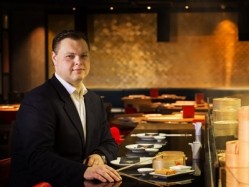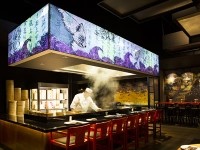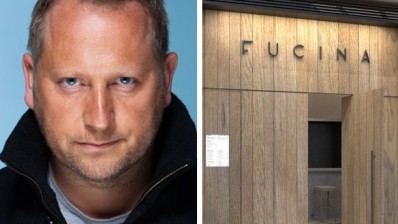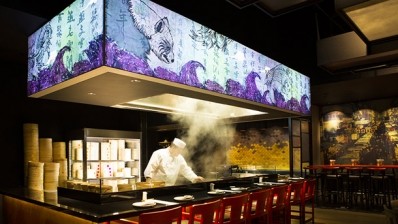Business Profile: Ping Pong

Artem Sagiryan pokes a chopstick at a char sui bun and rolls his eyes. This big doughy mass filled with barbecue-style pork is causing problems: some customers are accidentally eating the white squares of paper that stop the dumplings welding themselves to the wooden steam basket, thinking it’s rice paper.
“We’re looking at sourcing multi-coloured paper to put people off – it’s a tricky one as to tell each and every diner not to eat the greaseproof paper would be a bit patronising,” he says.
This dumpling conundrum highlights the difficulties of packaging a niche cuisine for a mainstream audience. Ping Pong has been trying to bring dim sum, cocktails and specialist teas to the masses since 2004, and it hasn’t been entirely plain sailing.
The premium casual group posted a £1.8m loss in its financial year 2010/2011 and the following year reassigned several of its central London leases and mothballed its Now express format near Liverpool Street Station. The freed-up cash has been used to open a pair of new-look sites in malls: first a branch in Wembley’s new London Designer Outlet and – early last month – a restaurant in Westfield Stratford.
Friendly and youthful, Russian-born Sagiryan has been involved in the business since day one. His high-profile investment banker father, Igor, is Ping Pong’s biggest backer and provided most of the capital for founder Kurt Zdesar to open the original site on Soho’s Great Marlborough Street.
The concept hasn’t changed much since the group’s inception: diners order by ticking boxes on a long thin tally sheet in a manner comparable to traditional Chinese dim sum restaurants. The small menu is authentically Chinese bar a few pan-Asian dishes and is very much focused on dim sum, offering a price point between casual and premium casual. Most small plates and duos and trios of dim sum are between £3 and £5, although there are some larger special dishes around the £7 mark.
Zdesar gradually reduced his capital in the business to fund other projects and left three years later in 2007. Since then, the business has been helmed by two different experienced CEOs: Jean-Michel Orieux, now chief executive of bakery chain Paul UK, and Paul Sarlas.
The latter left last year and shortly afterwards Sagiryan was installed as interim CEO. Though still only in his early 30s, he has worked all over the Ping Pong business, first on the frontline with spells in the kitchen, bar and on the floor, and latterly running his own branch in London’s Goodge Street. In between time-outs for an MBA and a short spell following in the footsteps of his father as an investment banker in Russia, he has also held several head-office roles within the group, including food and beverage systems, IT and marketing, franchise and international market support.
A new era
Sagiryan’s job title might be interim CEO, but there are currently no plans to recruit above him. “It’s a case of seeing how I get on. If I think I’m not mature enough for the role or the business isn’t doing as well as it should, we’ll rethink,” he says.
Most would agree that things are looking up a little for Ping Pong, which currently operates nine London restaurants. Losses narrowed significantly last year to £296,000 and the 10-year-old group has hailed the beginning of a new era and announced its intention to bring dim sum to a national audience after a decade of operating solely within the capital.
“We’ve had some bumps and bruises, but if we don’t take steps we’ll never learn to walk. The sites we have disposed of were under-performing because they were in the wrong places. James Horler [the former La Tasca chief executive who currently works for Ping Pong as a consultant] and I took the view that it would be better to concentrate on locations with a young, affluent demographic that offers solid weekday evening trade and busy days and nights at the weekend,” says Sagiryan, who identifies recently jettisoned sites in the City and Hampstead as the group’s most obvious missteps.
Along with some tricky locations, a key challenge for the group has been the perception that it is a late night-orientated proposition. Sites tend to be dark, modern and brooding affairs that bring to mind the aesthetic of Blade Runner. While the rule book certainly hasn’t been ripped up, the design at the two new sites is lighter.
The Westfield Stratford branch – our interview location – effectively compromises the brand’s edginess with daytime feasibility. The lighting is well balanced, there are bright turquoise banquettes and the tables are of light wood rather than dark lacquer. It’s not exactly Pizza Express, but those that pass by won’t mistake it for a closed nightclub at lunchtime either.
Sagiryan hints that older sites will eventually be given a similar look, but the focus will be on new branches for the moment. While Ping Pong announced a national rollout late last year, an eye-opening experience in Bristol has caused its expansion strategy to be revised.
“We were invited to have a nose around Bristol by the city council. We thought Cabot Circus [a mixed-use development home to a number of major restaurant brands] would be perfect, but after spending a Friday there we’re not so sure,” says Sagiryan, who is surprisingly candid about his regional reservations.
“There’s a great deal of foot traffic, but most of the restaurants aren’t that busy. We’re now looking at cities that have a crowd that eats out close to where
they work – such as Manchester and Birmingham. It seems Bristol city centre workers are likely to leave for the suburbs straight after work. We need to be cautious and take an analytical approach – we’ve made enough mistakes.”
Despite these concerns over national expansion, Ping Pong can be expected to take its first steps towards becoming a national brand soon. The group is hoping to open one more restaurant before its current financial year ends in April 2015, two in 2015-2016, three in 2016-2017 and five in 2017-2018. In particular, Sagiryan is currently eyeing two London opportunities – a location at the O2 Arena complex in Greenwich and a site in the forthcoming Battersea Power Station development.
New branches will be funded by cash flow, but there will be some minor bank involvement also.
International trading
There are currently four Ping Pong restaurants trading internationally: two company-owned branches in Washington DC and franchises in Dubai and Mumbai. Last year saw the closure of two franchised restaurants in Brazil and the pace of expansion in India has been far slower than planned.
While Sagiryan will continue to support existing franchisees and consider new partners in India and the UAE, deals in other territories are off the table for the moment. “It’s primarily a resource allocation issue. The focus will be on the UK for the foreseeable future. Paul Sarlas thought the franchises would grow like mushrooms. I don’t think that’s the case with full-service restaurants because they require big investments and the property selection process has to be meticulous.”
The Washington DC sites are run by a separate US-based management team and are doing “OK”, considering the economic difficulties the city’s restaurant scene is currently facing.
Back in the UK, Sagiryan sees his main focus, along with expanding the group, as building on his brand’s premium-casual credentials. “We were one of the first branded groups to really push premium cocktails and we want to capitalise on that by adding even better spirits at some locations,” he says. “We also need to ensure the sites continue to look premium – we did consider a new look that would require less capital expenditure, but decided it would be a bit off-brand.”
Average spend per head at the restaurants is currently £18 net of VAT and service, putting Ping Pong within the lower end of the premium-casual bracket. Sagiryan says his food margins are “average”: ingredients aren’t particularly expensive, but with all dim sum made by hand, labour costs are high at Ping Pong’s company-run production kitchen.
Centralised kitchens
A centralised kitchen has been hard-wired into the group’s business model from the inception of the brand. Tiny service kitchens that allow the restaurants to maximise trading areas were part of Zdesar’s original blueprint and are still an important part of the Ping Pong formula today.
New cooking platforms, including a grill, have been introduced recently, but the menu still revolves around steamed, baked and fried dishes, making the food quick and easy to get out with significantly lower in-branch labour costs than traditional restaurant setups.
Located within the outer reaches of east London, the Ping Pong-operated kitchen produces nearly all the food sold within its London estate. In contrast to the restaurants, the unit relies heavily on a Chinese workforce. The option of adding an evening shift means the kitchen can easily grow with the group as it expands up to around 40 locations.
It remains to be seen whether Ping Pong’s somewhat niche product range will hold it back from significant expansion. Dim sum might be well established in central London, but it’s far from being a mainstream category. While Sagiryan accepts a lack of customer understanding is a barrier to growth at present, he believes that the success of other niche Asian cuisines will help his cause.
“We like to define it as Chinese tapas, which chimes with the cocktail offering,” he says. “Dim sum is niche, but then so was sushi 10 years ago, and look how far a certain brand in that space has come.”
























